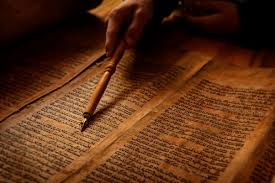 The Mishnah is a compilation of Jewish law. The Mishnah was composed between the Second and Third Centuries BCE. Its author, Rabbi Judah Ha-Nasi, lived in Judea and migrated to the cities of Beit Sha’rayim and Sepphoris. The Mishnah was redacted in these cities. Originally, it was composed of oral tradition, but later it was codified and written down. The Mishnah is divided into four sections, each dealing with a different aspect of Jewish life. have a peek at these guys
The Mishnah is a compilation of Jewish law. The Mishnah was composed between the Second and Third Centuries BCE. Its author, Rabbi Judah Ha-Nasi, lived in Judea and migrated to the cities of Beit Sha’rayim and Sepphoris. The Mishnah was redacted in these cities. Originally, it was composed of oral tradition, but later it was codified and written down. The Mishnah is divided into four sections, each dealing with a different aspect of Jewish life. have a peek at these guys
The Mishnah is composed in Hebrew, with some portions written in Aramaic. It is read from the left to the right, and has been transcribed into various languages. There are some manuscripts available in English translations. For Jewish scholars, the Mishnah has always been a valuable text. The Jewish people have been recited it as part of their Jewish tradition.
The Mishnah contains laws on sexual purity, food, and bodily purity, and does not discuss conversion. However, it deals with halakhah laws on other aspects, including the proper intentions for rituals and the consequences of these actions. This makes the Mishnah important for understanding Jewish law and preparing for the coming Millennium.
The Mishnah is composed of legal rulings and disputes between named Rabbis. Although it does not explain the reasons for these disputes, it is intended to represent majority views and are considered legally normative. It also contains other literary genres, including anecdotal precedents and detailed narrative descriptions of Temple ceremonies.
The Mishnah also makes demands on sages’ internal and external behaviors. It also contains tractates on justice, faith, and character. Moreover, the Mishnah introduces related aggadic elements into halakhic discussions. The Aggadah is a section of the Mishnah that discusses the concepts and values of religious life.
The Mishnah contains the opinions of the Tannaim (sages) who lived during the Second and Third Centuries BCE. In fact, a total of 120 Tannaim are known to have lived during this period. Jerusalem and Yavne were considered the spiritual center of Judaism during this period. It was during this period that the city of Jammia (Yavne) was founded, and many of the debates described in the Mishnah took place in this city.
The Mishnah consists of six orders, each of which consists of seven to twelve tractates. Each tractate is subdivided into chapters and peraqim. A chapter may be one or several paragraphs long. The Mishnah is also known as the Talmud. If you are looking for a summary of its content, then you can start with a brief introduction to each order and chapter.
The Mishnah has two main sources, the written word of God and the oral tradition transmitted by the sages of the Holy Land. It is this oral tradition that the great sages of the Talmudic period codified in the second century CE. These two documents shaped the majority of Jewish religious practice.
